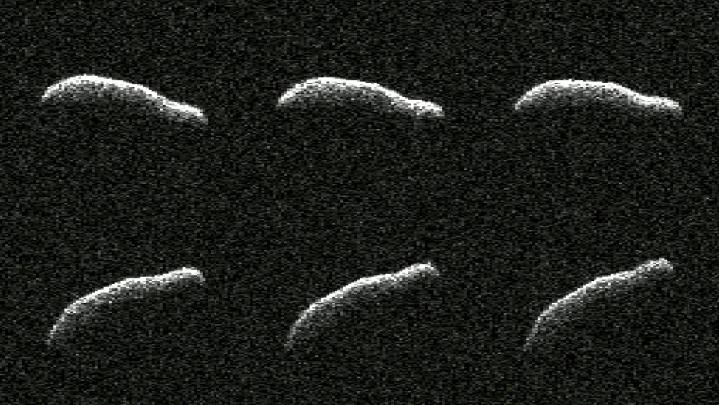Asteroids are most often roughly spherical, but they do come in all sorts of odd shapes and sizes. From asteroid Ryugu which is shaped like a spinning top to asteroid Kleopatra which is bone shaped, these chunks of rock orbiting the sun can range in size from just a meter across to the size of dwarf planets.
Now, there’s a new addition to the zoo of unusual asteroid shapes, as NASA recently announced it has observed an asteroid that is three times as long as it is wide.

“Of the 1,040 near-Earth objects observed by planetary radar to date, this is one of the most elongated we’ve seen,” said Lance Benner, principal scientist at NASA’s Jet Propulsion Laboratory who helped lead the observations, in a statement.
Known as 2011 AG5 for its discovery in 2011, the asteroid made a close approach to Earth on February 3 which gave astronomers the opportunity to take a closer look. Although there was no danger of the asteroid impacting our planet, because it passed just 1.1 million miles away it came close enough for observations to be made using the Goldstone Solar System Radar antenna dish, part of NASA’s Deep Space Network.
These showed that the asteroid was long and thin and around the size of the Empire State Building at 1,600 feet long and 500 feet wide. To the human eye, it would appear to be charcoal black, and its surface seems to be pitted with features each a few meters across.
The observations also helped to refine the asteroid’s orbit; information which is used by the group which tracks asteroids that could come close to Earth — NASA’s Center for Near Earth Object Studies (CNEOS). It orbits the sun every 621 days and won’t visit Earth again until 2040, but when it does it will come even closer, at 670,000 miles from the planet. That’s still not close enough to be any danger but CNEOS will be keeping an eye on it for the future.
“Interestingly, shortly after its discovery, 2011 AG5 became a poster-child asteroid when our analysis showed it had a small chance of a future impact,” said Paul Chodas, the director for CNEOS. “Continued observations of this object ruled out any chance of impact, and these new ranging measurements by the planetary radar team will further refine exactly where it will be far into the future.”



